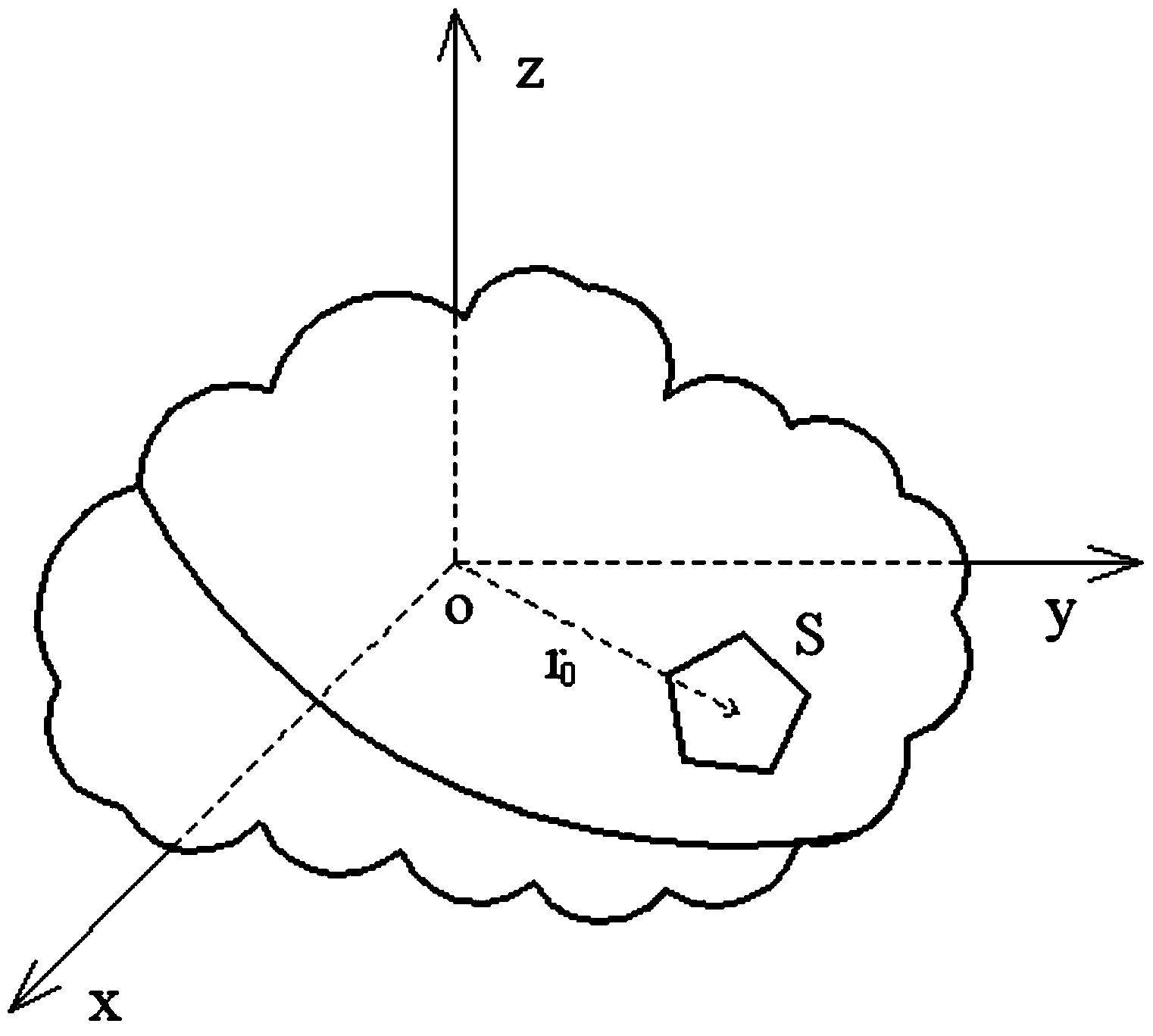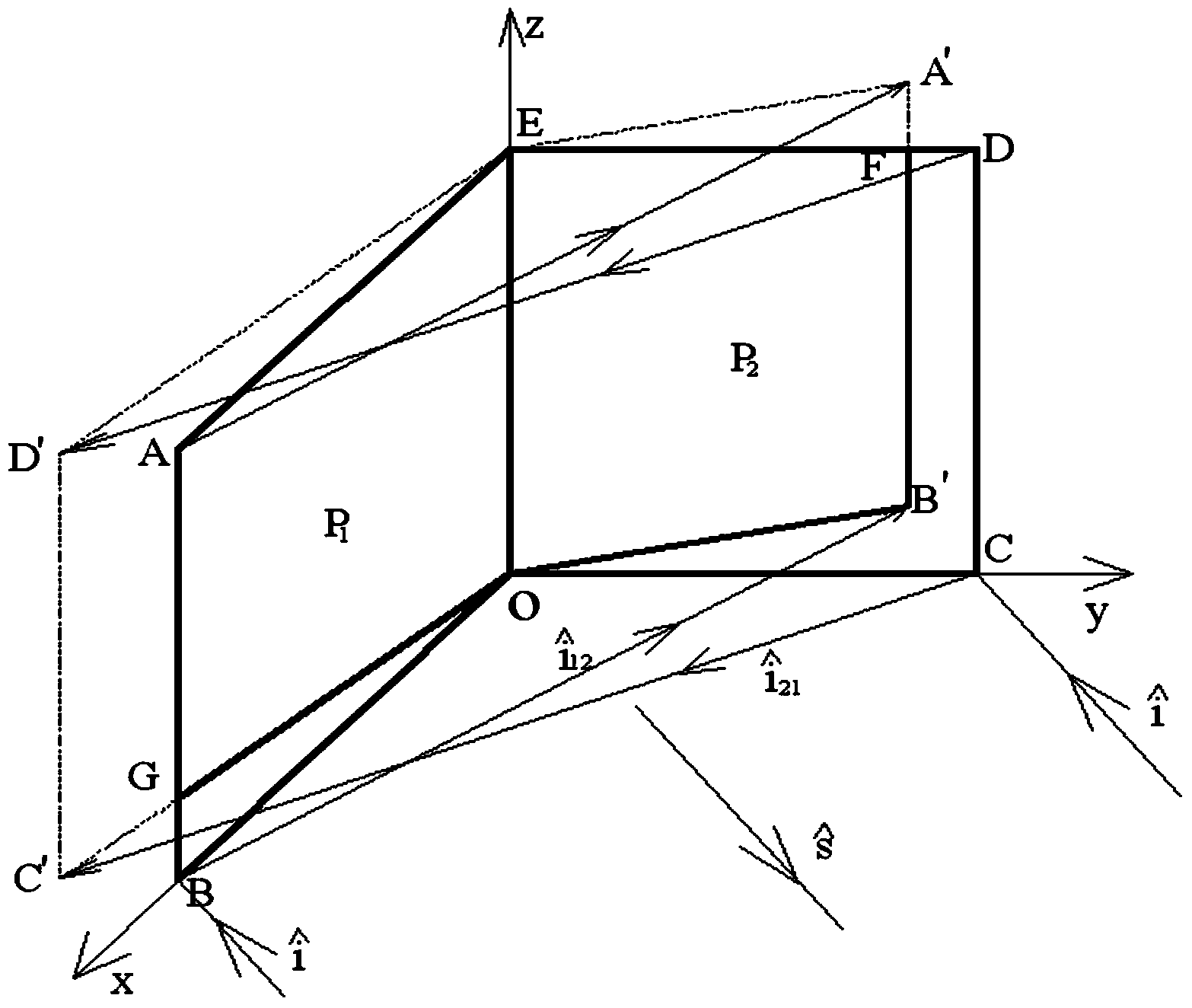Method for calculating radar cross section of corner reflector
A technology of radar cross-sectional area and calculation method, which is applied in calculation, instrument, electrical and digital data processing, etc., can solve the problems of low efficiency, cumbersome formula, low efficiency, etc., and achieves the effect of fast calculation, simple process and improved calculation efficiency
- Summary
- Abstract
- Description
- Claims
- Application Information
AI Technical Summary
Problems solved by technology
Method used
Image
Examples
Embodiment 1
[0053] The present invention will be further described below by taking a dihedral corner reflector as an example.
[0054] For dihedral reflectors, such as image 3 Shown, known P 1 (Quadrilateral ABOE) and P 2 (Quadrangle OCDE) All vertex coordinates of the surface, using GO to determine the lighting area:
[0055] 1)P 1 and P 2 direct wave an exposure. Using the Gordan surface element integration method to analyze the whole block P 1 ,P 2 The square root of the RCS is obtained by calculating the flat plate (quadrilateral ABOE and quadrilateral OCDE) using formula (3) and
[0056] 2)P 2 P 1 surface reflected wave of secondary irradiation. Use GO to sequentially determine P 1 Vertices (O, B, A, and E) on the plate are at P 2 Projection points O, B', A' and E on the surface, connect these points in sequence to obtain a polygon OB'A'E, and then obtain the polygon OB'A'E and P 2 Intersection of faces (polygon OB'FE). In the same way, P 1 P 2 surface reflec...
Embodiment 2
[0061] As the most commonly used triangular trihedral reflector in SAR radiation calibration, the present invention is equally applicable to calculating its RCS, and there are 15 kinds of reflection situations (P 1 ,P 2 ,P 3 ,P 1 P 2 ,P 1 P 3 ,P 2 P 3 ,P 3 P 2 ,P 3 P 1 ,P 2 P 1 ,P 1 P 2 P 3 ,P 1 P 3 P 2 ,P 2 P 1 P 3 ,P 2 P 3 P 1 ,P 3 P 1 P 2 and P 3 P 2 P 1 ), its structural dimensions are as Figure 7 As shown, OA=OB=OC=0.3m, which coincide with the x-axis, y-axis and z-axis respectively, is the scattering direction, the incident wave The angle with the z-axis is , the angle between its projection on the xoy plane and the x-axis is θ, and the frequency is 10GHz. The simulation results are shown in Figure 8, and compared with the results of the electromagnetic calculation software, Figure 8(a) shows the simulation results of this paper, Figure 8(b) shows the calculation results of the electromagnetic software, and Figure 8(c) shows the resu...
PUM
 Login to View More
Login to View More Abstract
Description
Claims
Application Information
 Login to View More
Login to View More - R&D
- Intellectual Property
- Life Sciences
- Materials
- Tech Scout
- Unparalleled Data Quality
- Higher Quality Content
- 60% Fewer Hallucinations
Browse by: Latest US Patents, China's latest patents, Technical Efficacy Thesaurus, Application Domain, Technology Topic, Popular Technical Reports.
© 2025 PatSnap. All rights reserved.Legal|Privacy policy|Modern Slavery Act Transparency Statement|Sitemap|About US| Contact US: help@patsnap.com



